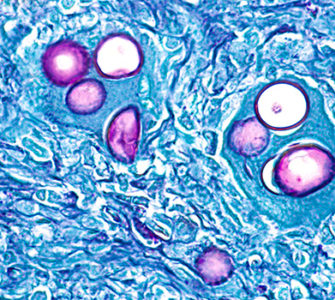Early exposure to Clostridium protects birds from necrotic enteritis
Early exposure to Clostridium perfringens (CP) in used litter may be a way to minimize the impact of necrotic enteritis (NE) in broilers, Steve Davis, DVM, told Poultry Health Today.
NE, caused by the CP pathogen, remains a problem in “no antibiotics ever” (NAE) production systems. However, in studies he’s conducted in birds raised without antibiotics, it’s difficult to initiate NE in birds exposed to CP very early in life, said Davis, chief executive officer of Colorado Quality Research.
For instance, broilers raised on litter obtained from a previous CP-challenge study had substantially less severe NE compared to broilers raised on new, clean pine shavings despite a challenge with CP at 16 days of age. In addition, day-old chicks placed on clean litter, fed CP and then challenged at 16 days of age had lower NE lesion scores, lower mortality and better performance compared to unchallenged broilers raised on clean litter.
Davis pointed out that besides early exposure to CP, control of NE requires good coccidiosis control. Coccidiosis, especially due to Eimeria maxima, damages the gut, which allows CP to flourish. The clostridial challenge will always be there, but without the intestinal damage done by E. maxima, it’s difficult to create NE.
Questions remain
The veterinarian said several unanswered questions remain: If early exposure to CP reduces NE, why do some of the worst outbreaks occur on NAE farms that have NE problems flock after flock? Is that repeat effect due to coccidiosis problems — most likely E. maxima — or does the strain of CP change from flock to flock?
The research results led him to conclude there’s potential for creating products or vaccines that enhance immunity against CP and NE. A live CP vaccination administered at the hatchery, for instance, might help protect against CP field challenges that generally occur at 16 or 17 days of age and minimize damage from NE.
Posted on February 21, 2019

















